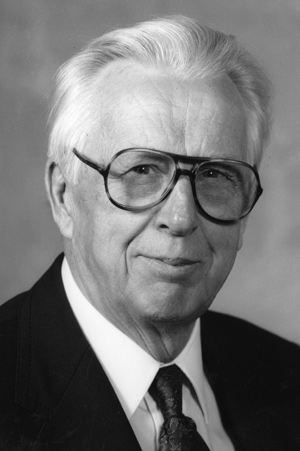Known as “the father of satellite meteorology,” Verner Suomi was a man of unique vision, with an influence on the field of meteorology that extended far beyond satellite research. One of his lasting legacies is the University of Wisconsin–Madison’s Space Science and Engineering Center (SSEC), which he cofounded with Robert Parent in 1965, and now the SSEC’s library has established a Web site devoted to the life and accomplishments of Suomi.

The site includes articles published about Suomi, obituaries and memorials written following his death in 1995, audio of an interview with Suomi conducted for the AMS and UCAR, and video of a discussion of Suomi’s life by some of his closest colleagues that was filmed during the 50th Anniversary of Meteorological Satellites in November 2009.
The panel discussion reveals Suomi as a man equally dedicated to–and skilled at–teaching and researching. CIRA’s Tom Vonder Haar recalled that Suomi’s graduate classes were
more like idea shops, where he would tell us a month before that we were going to do this, then he’d go on a trip and get some new ideas and come in and it would be a totally different agenda. We were working on projects like measuring the energy from the sun with a balloon launch from an aircraft carrier in the Atlantic . . . putting an air horn on a balloon to get the temperature profile with acoustic propagation information. Vern had a lot of ideas. . . I would say he was a dedicated teacher, and I think another example of that was his interest in the students and faculty in other departments here at UW; he worked a lot with electrical engineering–not just the faculty, but with the students–he worked with the physics group, the astronomy group, and soils. . . He was a very collegiate–maybe an eclectic–person. He didn’t have boundaries, he saw no boundaries in education and things of that kind.
On the research side, the University of Wisconsin’s Larry Sromovsky remembered Suomi’s unique method of persuasion while developing a net flux radiometer for NASA’s Pioneer Venus probe mission in 1978.
. . . One of the more remarkable things that he did was when we had a review, we had the sensor design pretty much set to go and there was this final design review that would allow us to go forward and actually build the flight instruments. And the NASA team came to Space Science and they looked at all our results and at one point in the discussion they expressed a great deal of skepticism about the strength of what looked like this delicate little sensor . . . surviving this 200-G deceleration. And Suomi–he was great for bold strokes, I must say, and simple bold statements. And he grabbed the sensor head and stood up and flung it against the wall as hard as he could and the sensor was picked up off the floor and it looked perfectly fine. And he said, “Now do you think it will survive?”